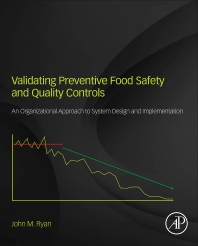Food safety should go beyond regulations
Why a food safety culture is fundamental

As we approach the 10-year anniversary of the Food Safety Modernization Act being signed into law, the food industry continues to magnify its focus on food safety — while preparing to face FDA’s new preventive controls inspections. Regulations have been studied, training courses attended and food safety plans written.
However, ensuring food safety requires more than drafting a plan and surviving an FDA inspection. Even more fundamental to long-term success is a strong food safety culture. Does your company have one?
According to the Global Food Safety Initiative, a food safety culture represents “shared values, beliefs and norms that affect mindset and behavior toward food safety in, across and throughout an organization.” The goal: to ensure continuous improvement of food safety by encouraging employees to “do the right thing” day in and day out to protect the product, the brand and consumers.
Need buy-in at all levels
There are many ways to create and evaluate such a culture, but success hinges on employee buy-in at all levels. Senior executives must consistently demonstrate their commitment to food safety to encourage employees to make food safety practices a priority. At the same time, production employees must feed information up the ranks, pointing to necessary improvements and investments.
Employees need to see themselves as food consumers and appreciate the responsibility they take on when working in the food industry. They also need to comprehend the procedures, practices and behaviors that act as preventive control measures leading to food safety. This step can be achieved through ongoing education, appropriate metrics, rewards, disciplinary actions and reinforcement of the importance of recognizing and proactively controlling food safety hazards.
Executives should avoid narrow metrics for “success” that focus merely on increased production numbers and efficiency, since these accomplishments can come at the expense of food safety. Production employees must see that food safety comes first, and they will, in turn, be empowered to “do the right thing” all the time, every time.
Importantly, employees throughout the organization should be able to answer the question: “How does my role contribute to food safety?” Employees not only need to know what they can and should do to prevent problems, but also what to do when failures occur, including their own. They should be empowered to report and take appropriate actions such as shutting down lines and isolating product. Employees should take pride in spotting a lapse in sanitation or detecting a pathogen such as Listeria monocytogenes near a production line, not see it as something to cover up.
Eye on continuous improvement
Creating a culture of food safety is a journey of continuous improvement. As we are all imperfect human beings, there is no perfect end point, but we need to gauge progress to ensure improvement and continue moving forward. There are many ways to do this, and the resources listed in the box offer some examples.
So the next time you hear news of another product recall, a plant being shut down by FDA or foodborne illnesses being traced back to a company, consider that a lapse in the food safety culture — not a missing element in a food safety plan — might have been the root cause. Ultimately, food safety is not about written procedures; it’s about engrained instincts and behaviors.
Leaders must set the tone and instill those instincts and behaviors across the organization. Otherwise, even the best-intentioned, well-documented food safety plan will not be fully effective.
.
For additional reading:
“A Culture of Food Safety: A Position Paper from the Global Food Safety Initiative (GFSI).” The Consumer Goods Forum/Global Food Safety Initiative. Version 1.0; April 11, 2018. http://tinyurl.com/y3ts3rs3
“Food Safety Culture, Creating a Behaviour Based Food Safety System,” Frank Yiannas. Springer; 2009. http://tinyurl.com/y5fed4x6
Looking for a reprint of this article?
From high-res PDFs to custom plaques, order your copy today!






